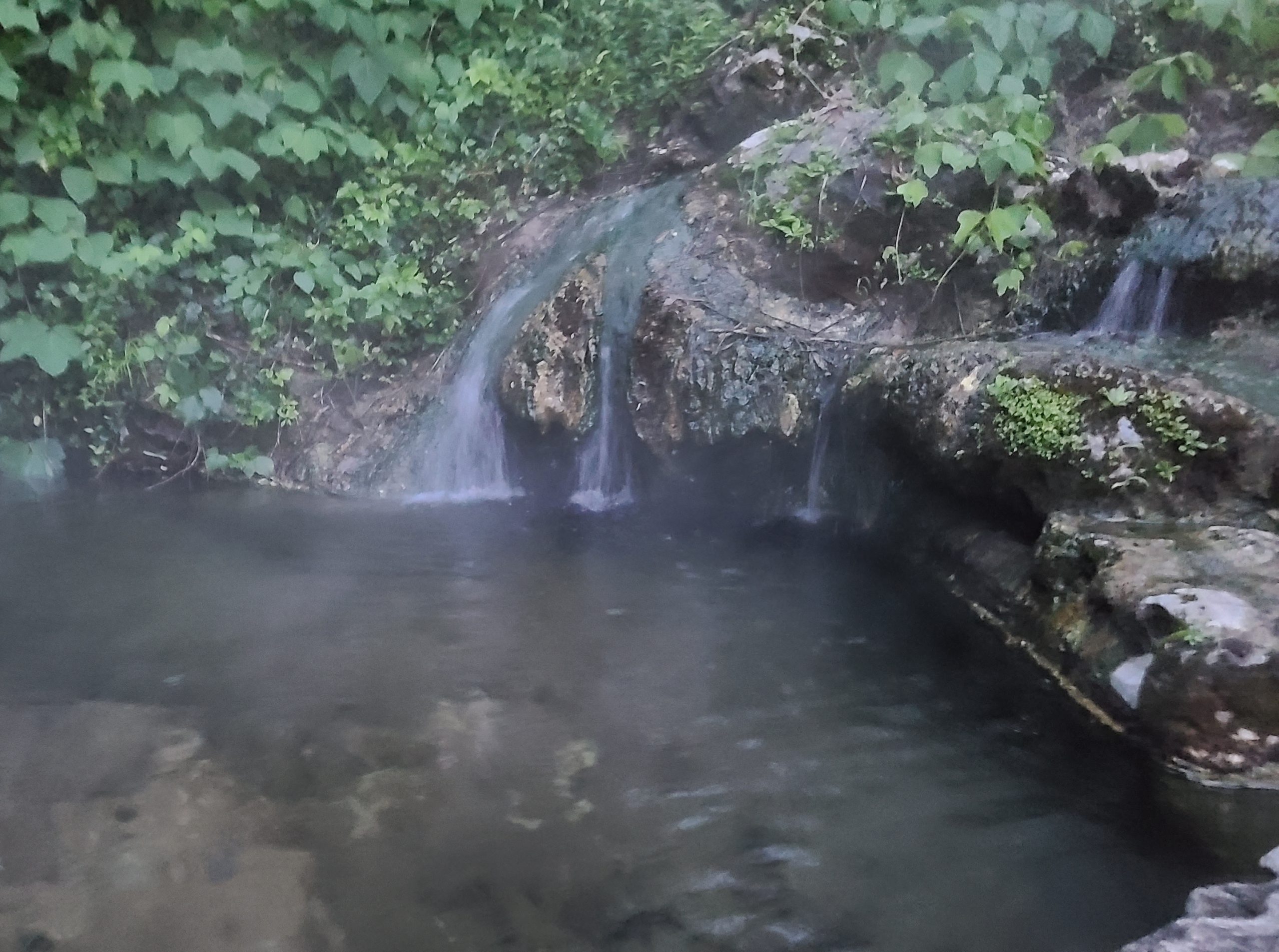May 2022 – Arkansas & Oklahoma Birding

These two states have been on our bucket list to visit for many years not just for birding, but because they are among the few we have never been to. Arkansas impressed us with the natural beauty of the landscape. Although we did not spend much time in Oklahoma the bird-watching there was excellent.
Arkansas – Day 1
Our first destination from the Little Rock airport was Petit Jean State Park. The drive through the park has many places to stop and hike to view the different rock formations and waterfalls. Cedar Creek Trail is one of those places and we chose the boardwalk here. We saw several Summer Tanagers, Carolina Wrens, and three Woodpecker species. Rock House Cave trail is another nice one for viewing the ancient caves. Along the way were Red-eyed Vireo, Tufted Titmouse, Cliff Swallows, and Indigo Bunting among others.



On the road to Holla Bend NWR, we passed farm fields with many singing Dickcissels and our first Scissor-Tailed Flycatcher of the year. We arrived at the Holla Bend visitor center to be greeted by three Baltimore Orioles and a Great Crested Flycatcher. Sometimes the best birding seems to be at the parking lots of information centers and trailheads. The wildlife drive here winds along the Arkansas River and the fields are full of Indigo Bunting. Other great birds on the drive were Blue-winged Teal, Blue Grosbeak, and one Swainson’s Thrush. Frog Bayou would be our last birding stop of the day and we happily had good looks at several Bell’s Vireo and Summer Tanagers. We also heard a couple of Yellow-breasted Chats that were hiding and did not want to come out in the open.



Fort Smith would be our home base for the next two nights and we stayed at the Courtyard downtown. There are a variety of restaurants within walking distance with menus ranging from Tex-Mexican to Seafood to Western beef burgers. Had a great time walking the downtown area and it was nice to see and hear the many Chimney Swifts overhead. Lots of history here as Fort Smith was in the mid eighteen hundreds at the edge of the frontier and one of the important gateways to what became the Wild West.
Oklahoma – Day 2
You must check out the Fort Smith Coffee Co. in the Bakery district. This is where we started Day 2 and after coffee, it was off to Oklahoma! Immediately after crossing the Arkansas river, we saw 3 Western Kingbirds hawking bugs from the powerlines. Moffett Bottoms is a flood plain mostly used for agriculture with wheat and corn being the main crops. Of course, birds love this type of habitat and in the fields, we saw lots of Red-winged Blackbirds, Savannah Sparrows, Dickcissels, and one target bird the Mississippi Kite. Stopping at a grove of trees we spotted a small flock of Cedar Waxwings and a Painted Bunting.


Sequoyah NWR has a magnificent wildlife drive that winds for 10 miles through both woodlands and wetlands. Right at the beginning, we were surprised to find a group of 8 Red-headed Woodpeckers flying from tree to tree. Also seen and heard were Warbling, Yellow-Throated, and Philadelphia Vireo. The wetlands had a variety of birds including Blue-winged Teal, Pied-billed Grebe, a Spotted Sandpiper, and one fairly rare Black-necked Stilt.


On our way north through the Cherokee Nation we stopped for lunch at the Cherry Tree Store to try the local favorite Indian taco. The taco is made of Fry bread under a ground beef and bean mixture topped with cheese and veggies, very delicious. Afterward, we visited a nearby birding hotspot called Dahlonegah Lake and park. On the fence posts and wires, we counted 8 Scissor-tailed Flycatchers. In the farm fields were Eastern Meadowlarks, Brown-headed Cowbirds, and a Northern Bobwhite. Overall this was a fantastic day of birding in a new state and we picked up 57 life birds in Oklahoma.
Arkansas – Day 3
Day 3 begins with a search for migrating shorebirds in particular the Upland, Pectoral and Buff-breasted sandpipers. Kibbler Bottoms is known for all these birds and more. While cruising very slowly along the stubble fields we found one Upland and one White-rumped Sandpiper. Other notable birds there were the Swainson’s Hawk, Northern Rough-winged Swallow, Cattle Egret, and of course many Dickcissel. During a quick stop at Cherokee Prairie, we picked up 10 Common Yellowthroats, Eastern Meadowlark and American Kestral.

Since we arrived in Arkansas, Mount Magazine State Park has been on our radar. The highest point in the state is on the summit here. Pulling over on the way up we saw and heard Eastern-wood Pewee, Tufted Titmouse, and a Brown Thrasher. The Lodge at Magazine Mountain has a great buffet-style restaurant with amazing views of the valley below. This is a dry county, so if you want to order alcohol you are required to sign a form for “club” membership. Birds up top included lots of Barn Swallows flying outside while we had lunch. Also, on the drive down we could hear Ovenbirds everywhere and we love the sound.
Hot Springs
Hot Springs is a one-of-a-kind town that is located entirely within a National Park. There is plenty of history here from the healing waters boiling out of the mountainside into the many spas to the illegal gangster-run gambling operations during the mid-20th century. We stayed in one of the restored historic hotels which had a bridge-type walkway in the back that leads to West Mountain. Birding on the trails there was really quite good and we saw 28 species which included 6 warbler species. Some of the best were Black-Throated Green and Chestnut-sided, both year birds.
We are very happy to have finally visited these two states and were very impressed with the variety and abundance of birds here.
Trip Birds: 93 Year Birds: 22 Life Birds: 0
Next Up: 2022 Highlights

You must be logged in to post a comment.